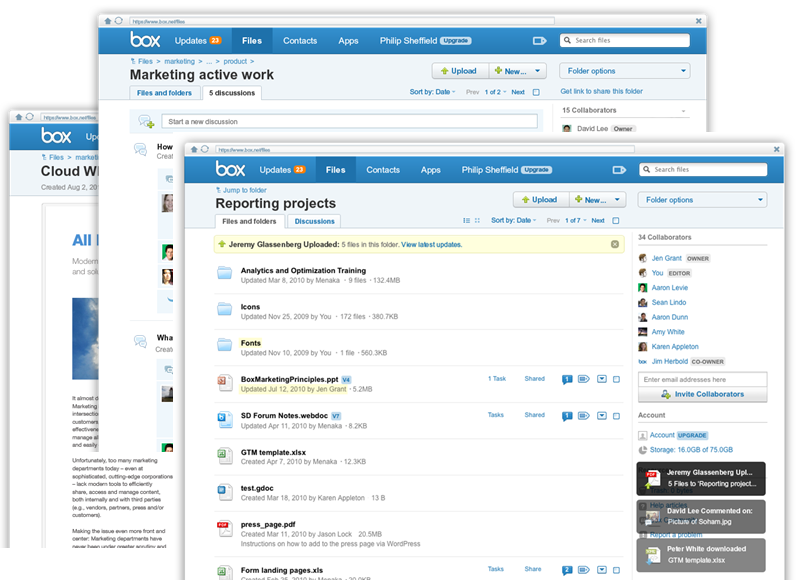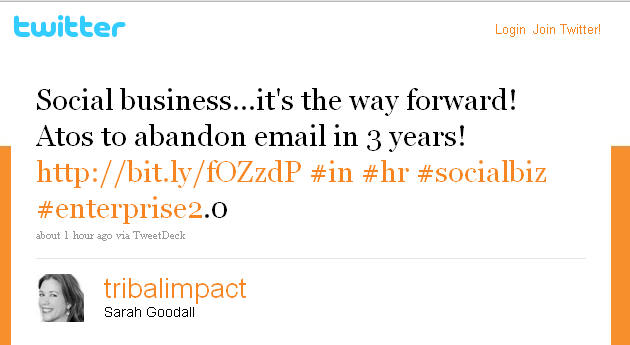Socialcast: Collaboration Beyond the Enterprise
Today the enterprise collaboration solutions provider Socialcast (a VMWare company), announced a set of new features to augment and extend the capability in their already impressive collaboration solution. For readers that might not be familiar with Socialcast's solution, it primarily serves as an internal enterprise activity and interest stream, where colleagues can share status updates, links to relevant content, share files, and easily create internal groups organized along organizational or project lines. More recently, Socialcast launched a product called Reach, which gives customers the ability to easily embed and include the core collaboration platform in any number of enterprise systems like ERP, CRM, or other knowledge management platforms, thus taking 'collaboration' closer to the places and systems where the work gets done.
Today's announcement of the new capability that allows enterprises to dynamically create external collaboration groups, and that extends the collaboration platform to an organizations' partners, customers, or even social media fans and followers; is a natural extension of the Reach tool, taking the collaboration environment beyond the walled garden of the internal enterprise, to wherever and with whomever leveraging the platform makes sense.
 External Group View - image provided by Socialcast
External Group View - image provided by Socialcast
Beginning today, users of Socialcast can create dynamic groups to invite contractors or suppliers to collaborate on projects, connect more effectively with joint venture partners, or even conduct on the fly customer and follower focus group discussions by simply sharing a link to an external group on Facebook or Twitter, and invite followers to participate. It is a great piece of functionality, and one that attempts to begin to address the more flexible and fluid ways that organizations, teams, and individuals are getting work accomplished today.
The other interesting feature that Socialcast announced today is a new organizational charting feature that not only can graphically depict the traditional organizational relationships and hierarchy (automatically generated from Active Directory or LDAP), but also can include insight into the external relationships with customers, suppliers, etc. that the organization's employees have developed over time. This new and hybrid type of an 'extended organization chart' is a novel idea, and one that over time in many organizations could prove to be just as valuable as the traditional, internally facing org. chart.
These new features continue to strengthen Socialcast's position in the enterprise collaboration technology space, an increasingly crowded market where Socialcast competes with offerings from Yammer, Salesforce Chatter, Socialtext, and others. Where Socialcast appears to have an edge, is in their realization and reaction to the changing ways of task and resource organization in many enterprises, the need for a collaboration solution to support much more flexible methods of collaboration beyond a separate and isolated tool, and with the ease of deployment and administration that allows the solution to take hold rapidly across and outside the enterprise.
I don't write too many 'new product announcement' type posts, because frankly, most of them are not all that interesting. But I have been a fan of the Socialcast platform for a while, have used the collaboration tool in some of my HR Technology classes, and do feel that in a crowded space that Socialcast has consistently had intelligent approaches and ideas to better enable enterprise (and beyond) forms of collaboration.
More and more, success for many organizations will be at least in part determined by how they can best manage and extract value from a disparate, diverse, and fluid ecosystem of internal and external resources, and products and solutions that can help manage and support this new framework offer organizations some clear opportunities and advantages.
You can learn more about Socialcast and today's announcement at www.socialcast.com.

 Steve
Steve




